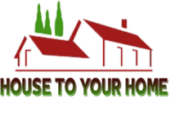The Evolution of HVAC Systems: Revolutionizing Comfort and Efficiency

Introduction (50 words): The HVAC (Heating, Ventilation, and Air Conditioning) industry has come a long way since its inception. With advancements in technology and a growing focus on sustainability, modern HVAC systems have transformed the way we experience comfort and efficiency in our homes, offices, and public spaces.
Body:
- Energy Efficiency and Sustainability (100 words): In response to the pressing need for energy conservation and environmental sustainability, HVAC systems have undergone a significant transformation. Today, energy-efficient HVAC systems utilize advanced technologies such as variable-speed compressors, smart thermostats, and zoned heating and cooling, enabling users to reduce energy consumption while maintaining optimal comfort levels. Furthermore, the integration of renewable energy sources, such as solar panels, geothermal heat pumps, and wind turbines, into HVAC systems has made substantial progress towards achieving carbon neutrality in building operations.
- Smart HVAC Technology (100 words): The advent of smart technology has revolutionized the HVAC industry. Smart thermostats, for instance, have become commonplace, allowing users to control their HVAC systems remotely through mobile apps or voice assistants. These devices utilize machine learning algorithms to learn user preferences and adjust temperature settings accordingly, optimizing energy usage. Additionally, interconnected smart HVAC systems enable data collection and analysis, facilitating predictive maintenance and identifying areas for improvement in energy efficiency, ultimately reducing costs and enhancing system performance.
- Indoor Air Quality and Health (100 words): Awareness about the impact of indoor air quality on health has led to a renewed focus on ventilation systems within HVAC solutions. Modern systems incorporate advanced filtration mechanisms, including HEPA filters, UV germicidal lights, and air purification technologies, effectively removing contaminants, allergens, and pathogens from the air. Additionally, humidity control features help maintain an optimal moisture level, preventing the growth of mold and mitigating respiratory issues. These advancements in HVAC systems contribute to healthier indoor environments, promoting well-being and productivity in both residential and commercial spaces.
- Integration of Internet of Things (IoT) (100 words): The integration of HVAC systems with the Internet of Things (IoT) has opened up new possibilities for improved control and automation. IoT-enabled sensors and actuators monitor various parameters, such as temperature, humidity, and occupancy, allowing HVAC systems to adapt in real-time. This dynamic control optimizes energy consumption by adjusting settings based on actual usage patterns. Moreover, HVAC systems integrated with smart building management systems provide valuable data insights, enabling facility managers to make informed decisions regarding maintenance, energy usage, and occupant comfort.
Conclusion (50 words): The HVAC industry continues to innovate, driven by the twin goals of energy efficiency and sustainability. With advancements in smart technology, indoor air quality, and IoT integration, modern HVAC systems have transformed the way we experience comfort while significantly reducing our ecological footprint. As we move forward, the HVAC industry will undoubtedly continue to evolve, offering even more efficient and environmentally friendly solutions.

